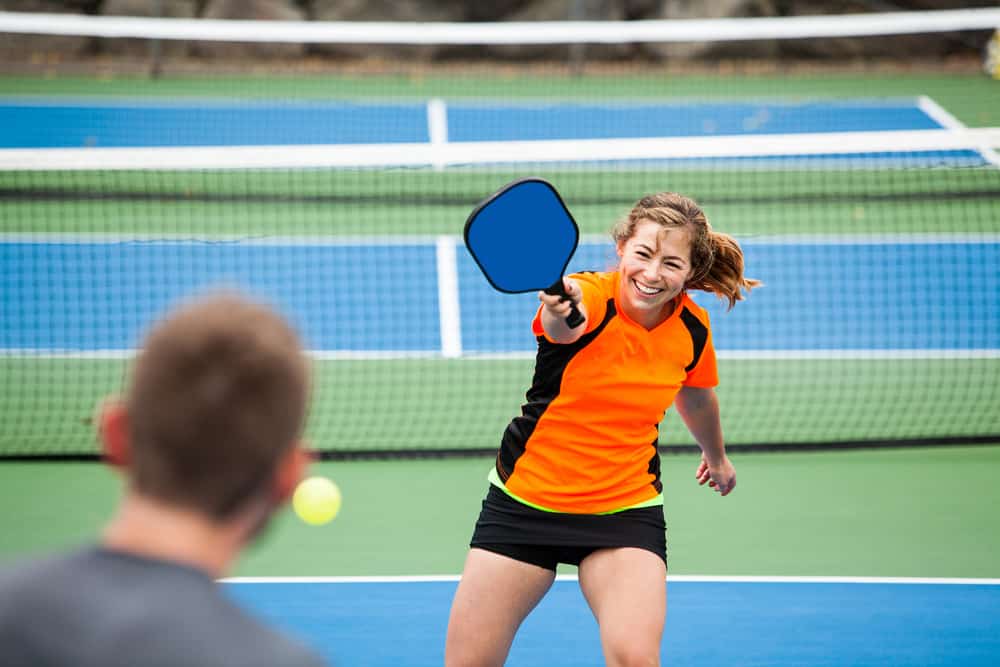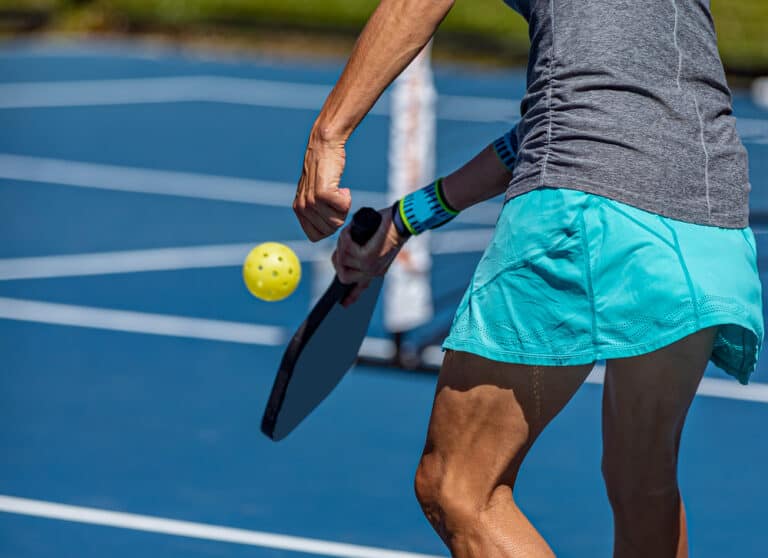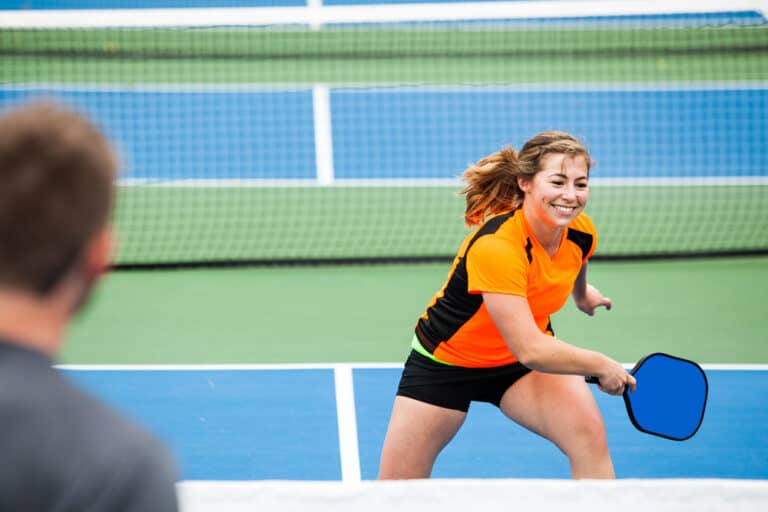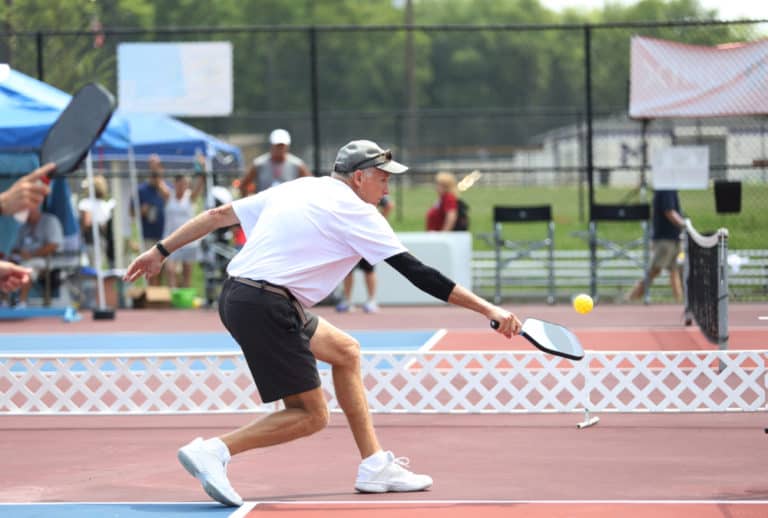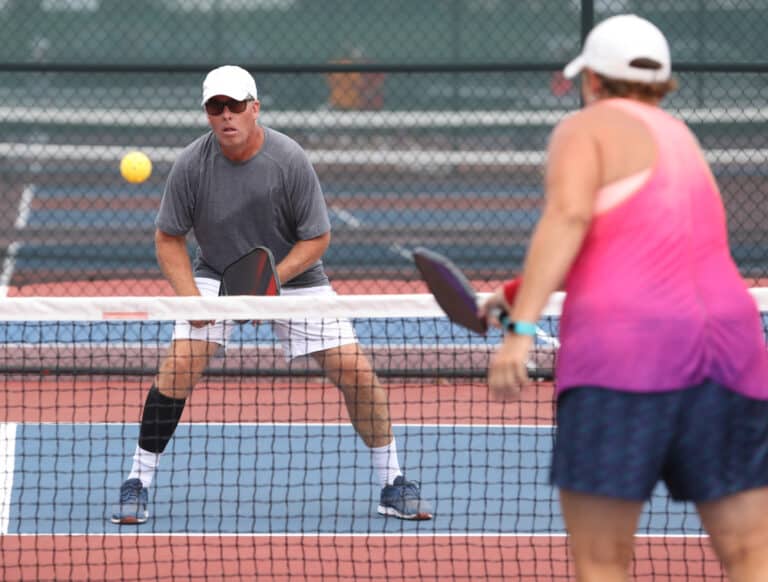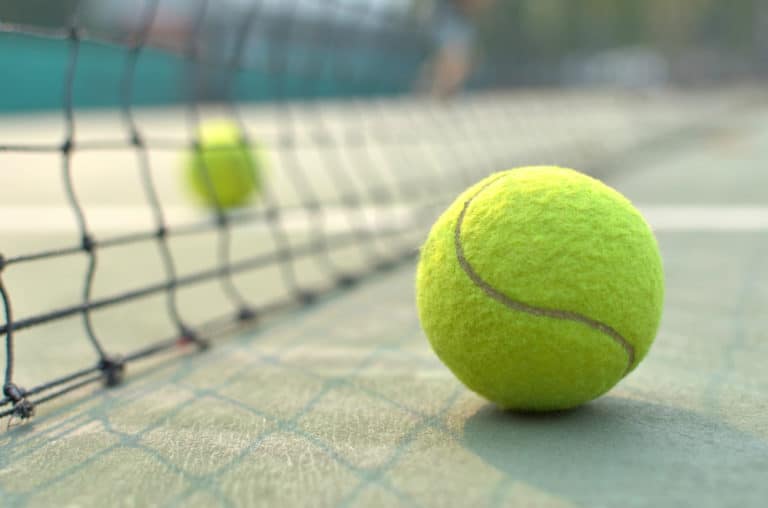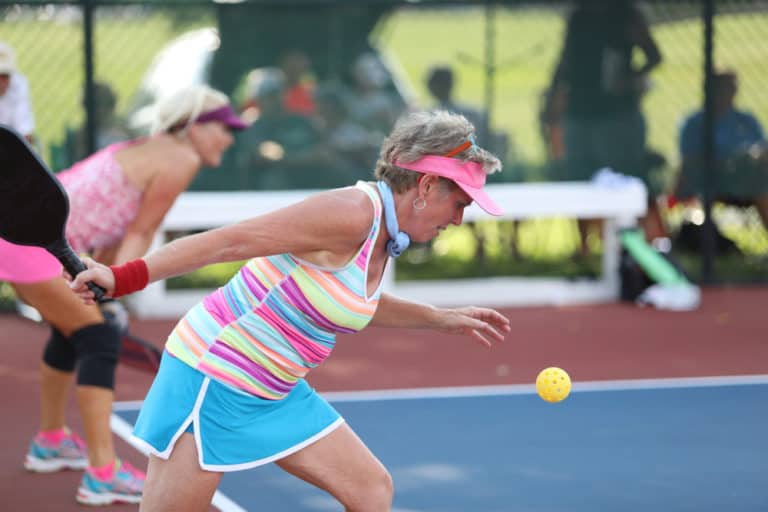Can You Hit Overhand In Pickleball?
Pickleball became what it is today by combining three different sports. It all began with three fathers who wanted to entertain their children with something different, and thanks to a combination of badminton, tennis, and ping-pong, we now have the hit that is pickleball. But its rules are a bit different, so what do the official rules state about overhand serves and overhand hits?
You can hit overhand in pickleball. If you are dinking the ball and it calls for an overhand return, you may hit overhand. The only exception is the serve. You may only serve underhand or drop serve. After every serve, once the ball was hit underhand below your waist, you may play overhand.
An overhand hit is a good shot to play when you want to go for an offensive power shot or when you are on the defense from a lob shot or an overhead smash. Overhand shots are highly effective if you play them correctly and when the situation calls for a lob shot or an overhead smash. Let’s look at a few different types of overhand shots in the exciting and energetic game of pickleball.
When Are Overhand Shots Allowed?
An overhand shot is usually played when you need to defend a lob or an overhead smash. You can also play an overhand when you want more power than only dinking the ball with an underhand. An overhand shot allows you to put more force, momentum, and gravity into your shot to score a point. You can also exert more muscle power with an overhand than only playing underhand.
Overhand shots have their place in pickleball and will be helpful to have in your arsenal when you want to play those power shots or when you are on the defense from your opponent’s lob or overhead smash.
However, it is crucial to keep in mind that it is not always the best idea to play an overhand shot. It is not always called for to go for power, momentum, or an aggressive power shot. Sometimes, and more often than not, the points are scored at the kitchen line, where you should be playing the ball softly and just dinking the ball back and forth. Overhand shots tend to be ineffective in this scenario.
How Do You Play An Overhand Shot?
An overhand shot is played step sideways from the kitchen line, looking towards the side of the court. This is called a drop step backward. Bring your dominant hand (the hand that is holding the paddle) up to your shoulders. The paddle should almost touch the back of your shoulder. It is also a good idea for you to put your other hand in the air to spot the ball.
You will start to shuffle backward in defense as you spot the ball. As the ball goes over your head after you spotted it, you will keep on shuffling backward to the position where you will be best able to hit the ball. Once you’ve reached that point, you bring the paddle around and hit the ball with force and precision.
A golden rule in pickleball, especially if you are going to play overhand, is to have confidence in yourself. Be sure that you will be able to play overhand and that you can be consistent in returning the ball. To be in the offense all the time, be sure that you can put a point away safely. As with all sports, it’s remarkable to see how much true confidence can improve your game.
Is It A Fault When I Play An Overhand Shot?
The only time in pickleball that you will receive a fault for playing an overhand shot is if you play it while serving the ball. You are not allowed to serve the ball overhand in pickleball like it is done in tennis. A serve should always be played underhand and from below your navel and waist.
After you serve, the ball must bounce on each side. The first bounce is on your opponent’s side of the court and then also on your side of the court after the return shot. Then, and only then, are you allowed to start playing overhand shots. An overhand serve will count as an immediate fault.
What Do The Rules Say About Overhand Serving?
- The rules state that, when serving, you should serve with your arm moving in an upward arc when you’re striking the ball with your paddle. This upward arc can be achieved by playing a forehand or a backhand motion, but never with an overhand motion.
- The rules also state that the paddle head should not be above the highest part of your wrist when it hits the ball. This is also not possible with an overhand shot.
- When you make contact with the ball, the paddle must not be above the waist. Again, this is impossible with an overhand serve.
- With a traditional serve, you do not bounce the ball off the court before hitting it.
A Drop Serve
- A drop serve is a new addition to the pickleball rules, allowed since 2021.
- With a drop serve, you drop the ball and let it bounce on the court before hitting it. You can’t toss the ball up into the air or throw it down to the court; it must be dropped naturally. You may drop it from any height you can reach, though.
- You can serve a drop serve with either a forehand or a backhand motion. Still, no overhand shots are allowed.
- Drop serves allow you to have the head of the paddle slightly above your wrist but still not high enough to use an overhand shot for serving.
- Even with a drop serve, you may never serve a ball with an overhand shot by putting your paddle hand overhead. A serve must always be played from below the waist with an upward arc.
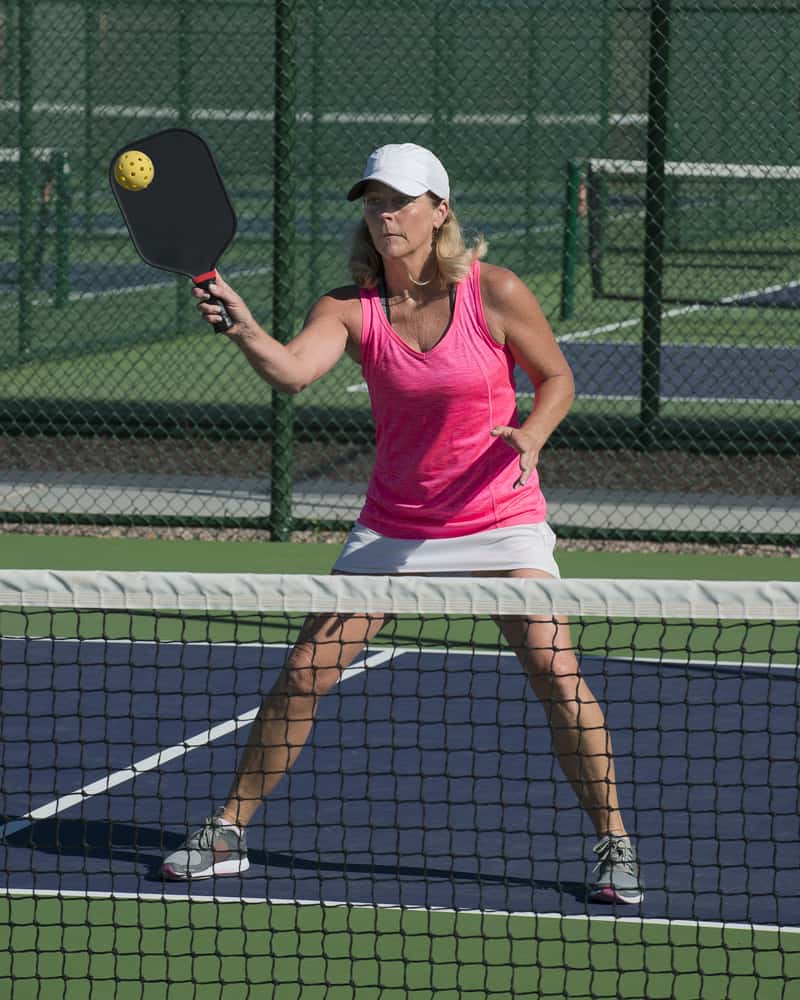
The Best Time To Play An Overhand Shot
As mentioned earlier, n overhand shot is not always called for or practical. We will now look at the circumstances where it may be time to go on the offense or defense with a good, powerful overhand shot. This is primarily when you’re defending a lob shot or playing an overhead smash. Both of these situations could call for overhand shots.
Lob Shot
The purpose of playing a lob shot is to catch your opponent off-guard. It can also be used to force your opponent back to the baseline. Another reason you would want to play a lob shot is that it is very effective for the defense, buying you some time to prepare yourself for an offensive shot. It can either be played to reset the game to a slower pace or to catch your opponent off-guard.
A lob shot is played when you want to send the ball overhead, high, and deep. An overhand shot is ideal for these purposes.
A successful lob shot is when you shoot the ball over your opponent’s head, and they are forced to retreat to get to the ball. However, it can just as easily backfire on you if they return it with a hard overhead smash.
Another successful lob is when you catch your opponent off-guard from the non-volley zone line as they are returning to the kitchen line.
Do not back paddle to get to the ball; keep your heels firmly on the ground. Many injuries occur from players retrieving a lob shot wrong. It is crucial that you turn your body the right way. Think of it as if you are opening a door, looking to the side of the court. Once you’ve spotted the ball, you will be able to shuffle back into a position where it is best to hit the ball.
Overhead Smash
The overhead smash is a hard overhand shot that is directed downwards into your opponent’s side of the court. This is usually played as a return of a lob shot, high return, or a high bounce. It is aimed at an open spot on your opponent’s court, with your paddle extended overhead at maximum height, almost touching the back of your shoulder, and with your elbow extended straight.
It is crucial that you never back-paddle or step back to retrieve the ball. It is vital that you always keep your feet firmly on the ground. There is both a right way and a wrong way of getting to the ball quickly enough, and back-stepping to the ball will definitely set you up for a few injuries.
The right way of returning a lob shot with a hard overhand shot or an overhead smash is to step sideways from the kitchen line and face the sideline of the court. You can think of it as if you are opening a door. Get your feet firmly on the ground as fast as you can.
You can also put your other hand in the air to spot the ball. You will almost automatically start shuffling backward in defense as you spot the ball. As the ball flies over your head, you will keep on shuffling back to the position where you will be able to hit the ball.
Volley
A volley is a shot that is played before the ball hits the ground. A volley can either be played when the ball is close to the ground or over your head. If the ball is played without touching the ground, it is called a volley. A volley shot is typically more powerful, and one of the popular ways to play a volley is with a powerful overhead smash which will bring your paddle up with an overhand hit.
The Best Grips For Overhand Hits
Having the correct pickleball grip is just as important as knowing how to play an overhand hit. A good grip can improve a weaker overhand shot, and your grip can complement your play and make a shot more prominent. Knowing all the different grips is essential since they will give you more insight into where the pickleball will go and how to play the next shot effectively.
There are three basic paddle grips in pickleball:
- Continental Pickleball Grip
- Eastern Pickleball Grip
- Western Pickleball Grip
Our primary focus will be the continental grip, as this is the grip that can be used for every shot in pickleball. The continental grip will maximize your forehand shot during volleys, backhands, dink shots, and most importantly, the hard overhead smash where you want to hit the ball with an overhand shot.
Continental Pickleball Grip
First of all, when thinking of the continental grip, it is best explained as if you are meeting someone and you shake hands. So go right ahead and shake hands with your pickleball paddle; after all, your paddle will be your best friend on the court.
So once you are shaking hands with your paddle, and it sits comfortably in your palm, you will know that you are gripping your paddle correctly if you can see a V created by your thumb and index finger and that V is facing towards you. This is the neutral continental grip. There are two more variants of the continental grip: the weak continental grip and the strong continental grip.
The neutral continental grip is the one that you will use most often. It is excellent for control with forehand and backhand dinking and driving the pickleball. This is also the grip that you use for serving the pickleball.
Weak Continental Grip
The weak continental grip doesn’t have many uses; Its only actual benefit is that it is easy to have your paddle face open with this weak grip. It won’t be of any help to you at all if you are playing an overhand hit. A weak continental grip will have the V that you create to the left side if you’re right-handed or to your right if you are left-handed.
Strong Continental Grip
The strong continental grip is the one that you will use for the aggressive shots, like the overhand hits with a lob shot and an overhead smash. However, you should also remember that this grip is not great to use when you are close to the net. A strong continental grip gives you more power and wrist action because your paddle, wrist, and arm are aligned.
To grip your paddle with a strong continental grip, first, grip it with the neutral continental grip. Now you just rotate your grip to the right if you are right-handed or to the left if you are left-handed. Adjust your grip slightly if it is a bit uncomfortable. This is the perfect grip for aggressive overhand shots.
Conclusion
As you can see, you are allowed to hit overhand shots in pickleball, but the situation in pickleball doesn’t always require a hard, aggressive overhand shot. Most of the time, points are scored at the kitchen line with dinking and driving the ball, where overhand shots are overkill and impractical; all you really need then are soft hits, underhand grips, and a lot of patience.
References
- https://usapickleball.org/what-is-pickleball/how-to-play/
- https://archive.seattletimes.com/archive/?date=19900824&slug=1089412
- https://www.youtube.com/watch?v=Vm-sA2LiCZk
- https://www.youtube.com/watch?v=TDoVXMmWxNA
- https://www.youtube.com/watch?v=U7Ft0dKg_H0
- https://www.youtube.com/watch?v=OdjEBqih_2Q
- https://www.youtube.com/watch?v=8OHu0gRZf2o
- https://www.youtube.com/watch?v=ggvCaIrj9Ok

